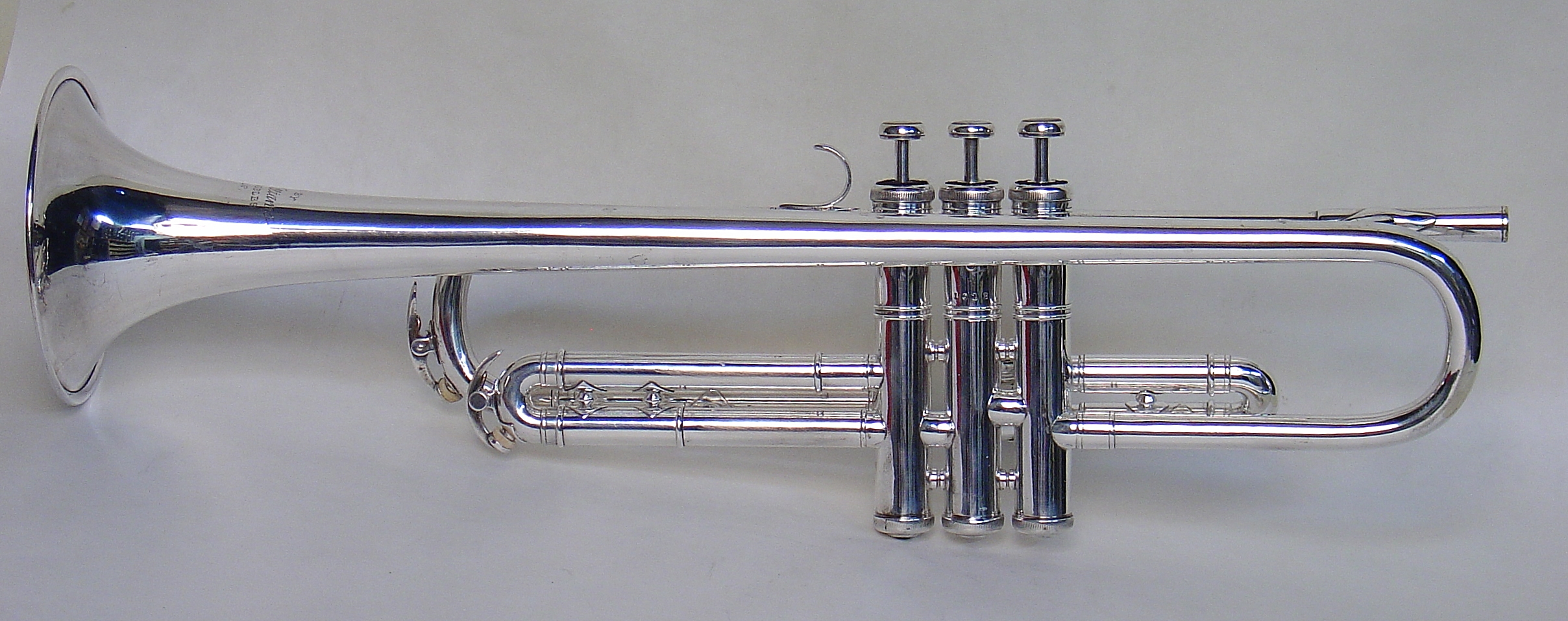Earl Williams Trumpet
The trombones made by Earl Williams are well known to most serious trombone players, but few know that he also made trumpets. The reason for this is obvious, since he made very few trumpets and during a very difficult time in his career. Williams had worked for F.E. Olds around 1915 and established an excellent reputation repairing and customizing brass instruments during the 1920s. In 1928, he and Spike Wallace, trombonist with the Los Angeles Philharmonic and otherwise busy professional, formed a partnership for manufacturing Williams and Wallace trombones. Judging by the earliest Williams and Wallace trombones that I have seen, Earl Williams was up to the task of building quality instruments.
The Great Depression was a hard time for such a small shop and when the partnership broke up in 1936, Williams went back to mostly repairing. He had to move to a smaller shop that he rented from Harry Garlock, a woodwind repairman. It was during these years that he started making trombones signed with his own name and when this trumpet was made. I spoke with Harry Garlock in the 1980s at which time he told me that Williams bought the valve sections from a maker back east and made the rest himself. He also told me that Williams would walk to the engraver, just a few blocks away, when the instruments were ready for finishing. More instruments and information on Williams can be found on other pages on this site.
At the time that I purchased this trumpet, I was told that it was the last of 12 trumpets that Williams made and the serial number (1012) would lend credence to that idea. The Williams and Wallace trombone serial numbers were in the mid-three digits at the end and it makes sense to start a trumpet series with 1001. This valve section might have been made by E.K. Blessing in Elkhart and some Rudy Muck trumpets (a small maker in New York City) appear to have the same assembly. The valve caps and buttons might lead you to think that this was made by Olds, but closer inspections rules this out.
The only other Williams trumpet that I have seen has a valve section and other parts that look very much like standard Blessing parts. That one has a five digit serial number and the engraving looks very much like this one. This evidence would refute or confuse the idea that his trumpets were #1001 to 1012, but whatever the facts, they are very rare trumpets. As always, I invite others with corrections and additions to contact me. The bore of this trumpet measures .462", the bell rim diameter is 4 5/8" and the over all length is 19 5/8" (19 1/4" from bell rim to bell curve.



